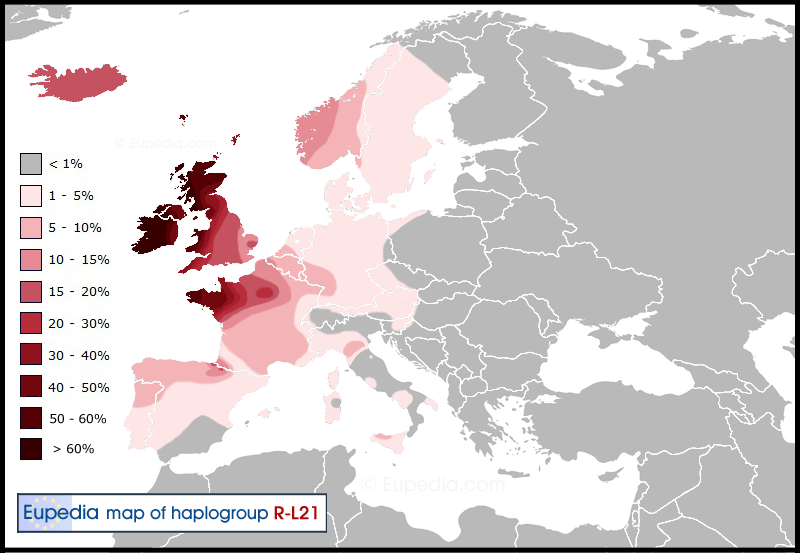Barantes
Regular Member
- Messages
- 72
- Reaction score
- 6
- Points
- 0
- Location
- Ontario
- Ethnic group
- Portuguese
- Y-DNA haplogroup
- R-L21
- mtDNA haplogroup
- T2B
I have recently found out that I am R-L21+, I am from Northern Portugal. I am wondering how it may have made its way into Northern Portugal/Galicia. Would this be carried by the Gallaecian Celts or possibly another group of Celts from Gaul or something that made their way down. I have noticed that it is extremely high in Ireland and the British Isles in general, I personally have no ancestry from the isles, so I do not see that being a possibility. Hopefully you guys can help.


